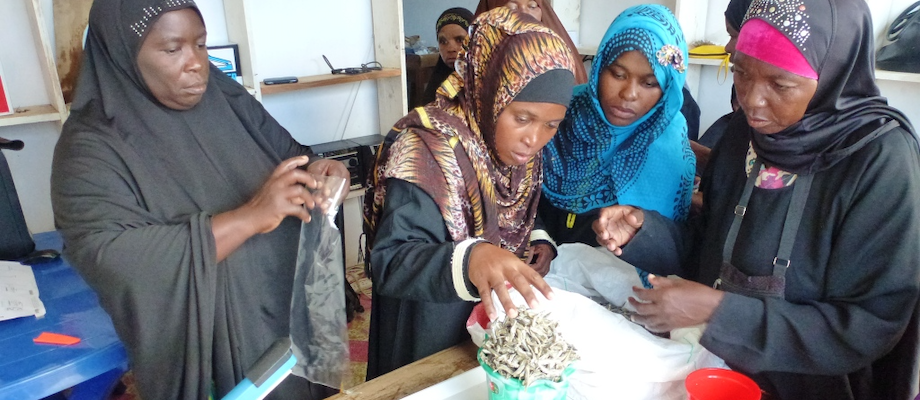Women in Fisheries as Agents of Change to Reduce FLW
Meghan Grever, 26 January 2021
As awareness of gender issues in international and national arenas grows, policy-makers in fisheries and aquaculture are becoming more gender-sensitive and are beginning to address gender issues in the fisheries sector. Historically, the policy agenda has given priority to fish production or fish farming activities, of which men generally predominate, often glancing over secondary sector processing and marketing activities where women tend to play a large role. It is increasingly clear, however, that gender is a defining factor in the social and economic context that shapes how food value chains function. Gender norms influence roles and responsibilities of women and men and the division of labour and affect disparities in access to resources, credit, technology, training and knowledge. Gender norms therefore heavily impact the overall efficiency of the food value chain, including food loss and waste.
An estimated 59.51 million people were engaged in the primary sector of fisheries and aquaculture in 2018. Most of those engaged in fishing and fish farming are located in developing countries, with the majority being small-scale, artisanal fisheries and aquaculture workers. This includes various types of employment, including full-time, seasonal, and temporary engagements. Although women accounted for just 14 percent of this workforce, many authors and non-governmental organizations (NGOs) report that this number rises to one out of every two workers being a woman when considering both the primary and secondary fisheries and aquaculture sectors. Gender studies have shown that women are often assigned to unstable, poorly paid or unpaid positions within the secondary sector that often go unrecognized.
Women considerably outnumber men in processing and marketing activities in both large-scale fisheries (66 percent) and small-scale inland fisheries (54 percent). Women also hold a significant share of labour in small-scale marine (36 percent) and large-scale inland fisheries (28 percent). As well, case studies from Asia suggest women’s contribution is often much greater than men’s, with, for example, women representing 33 percent of the rural aquaculture labour force engaged in fish production (excluding post-harvest activities) in China, 42 percent in Indonesia and 80 percent in Viet Nam.
When afforded appropriate technology and funding, women also act as small-scale entrepreneurs, focusing on household-level operations, and less on offshore or long-distance capture fisheries. In small-scale coastal fisheries, women are generally responsible for skilled and time-consuming onshore tasks, or they manage smaller fishing boats and canoes.
As key actors in processing and trading, women are in a prime position to make sure that customers get more food of good quality at an affordable price and ensure that less food is wasted before it is sold and eaten. Along the west coast of Africa, for example, women are often the first purchaser of product from the harvester and take responsibility for ensuring fish is available throughout the year, especially during the lean season. The women thoroughly preserve the fish through methods of smoking, salting, and curing before selling the product locally. Being in this position, the women can, theoretically, influence the fisher’s behavior, such as the type and quantity of fish landed or on-board storage practices, as well as the consumers’ habits by proposing better quality products in the market.
Evidence indicates that substantial post-harvest losses and contaminated fish products are the result of inefficient and unhygienic harvesting, transportation, and processing methods. Case studies show that these issues are particularly prevalent in small-scale systems, and often can be resolved by small changes. Despite technical advances and innovations many developing countries still lack adequate infrastructure, services and practices for adequate onboard and on-shore handling and for maintaining fish quality. As women outnumber men in fish post-harvest activities, they are uniquely positioned to impact and change the efficiency of the system. It is therefore crucial that policies and practices which close the gender gap in access to resources, credit, technology, training and knowledge are put in place, and thus empower women to directly contribute to improving food quality and safety and reducing food loss and waste.
Women are essential users of fisheries resources and pivotal players in the fisheries sector and should be considered important agents of change. Women in fisheries need to be seen and acknowledged, gain equal rights and equal access to credit and technology, and have equal say in decision-making and policy processes. Recognizing the vital importance of gender equity in the fish value chain is essential to ensuring overall value chain efficiency and to reducing food loss and waste.
Find more on gender equity in the fish value chain here.

